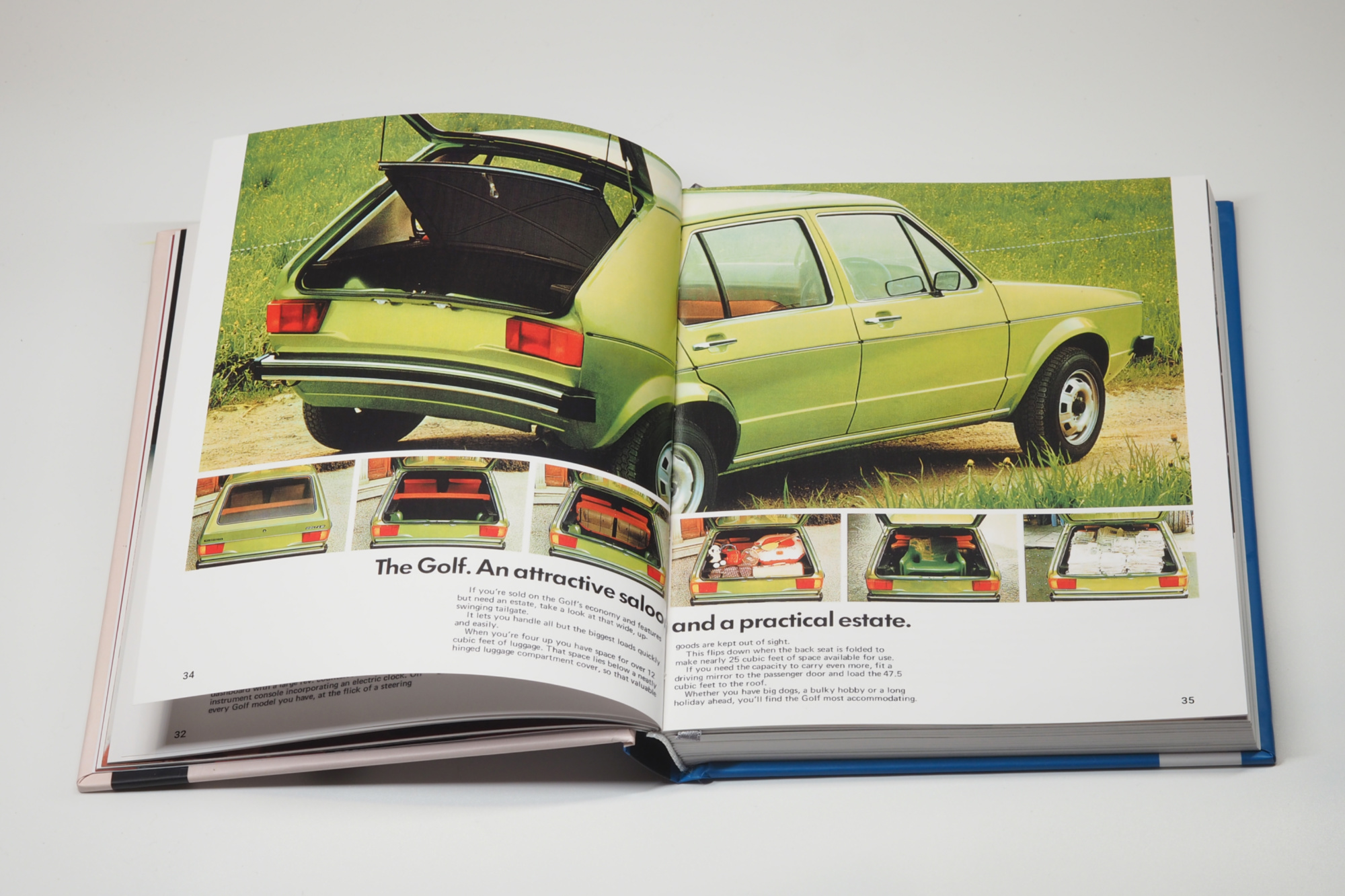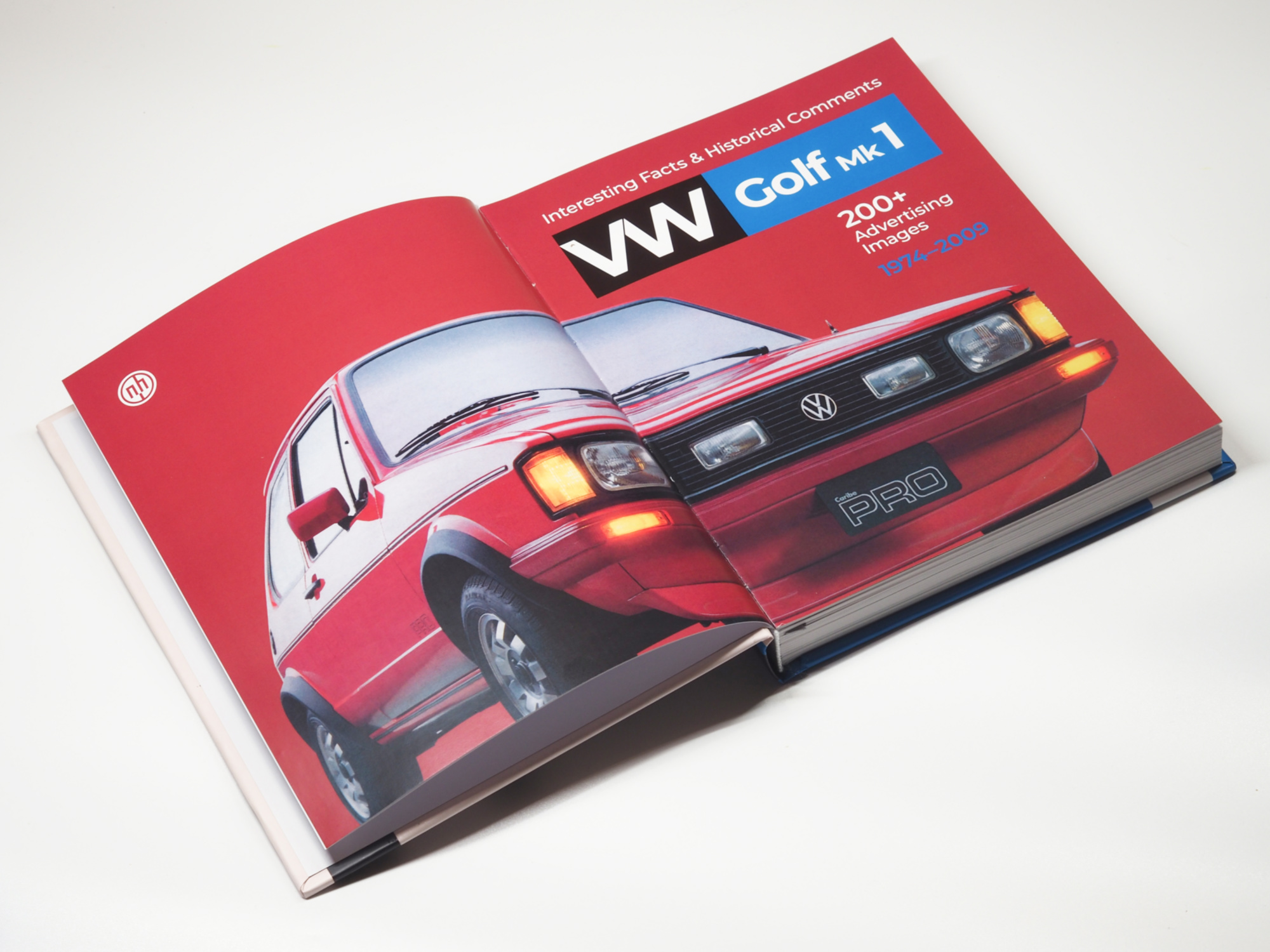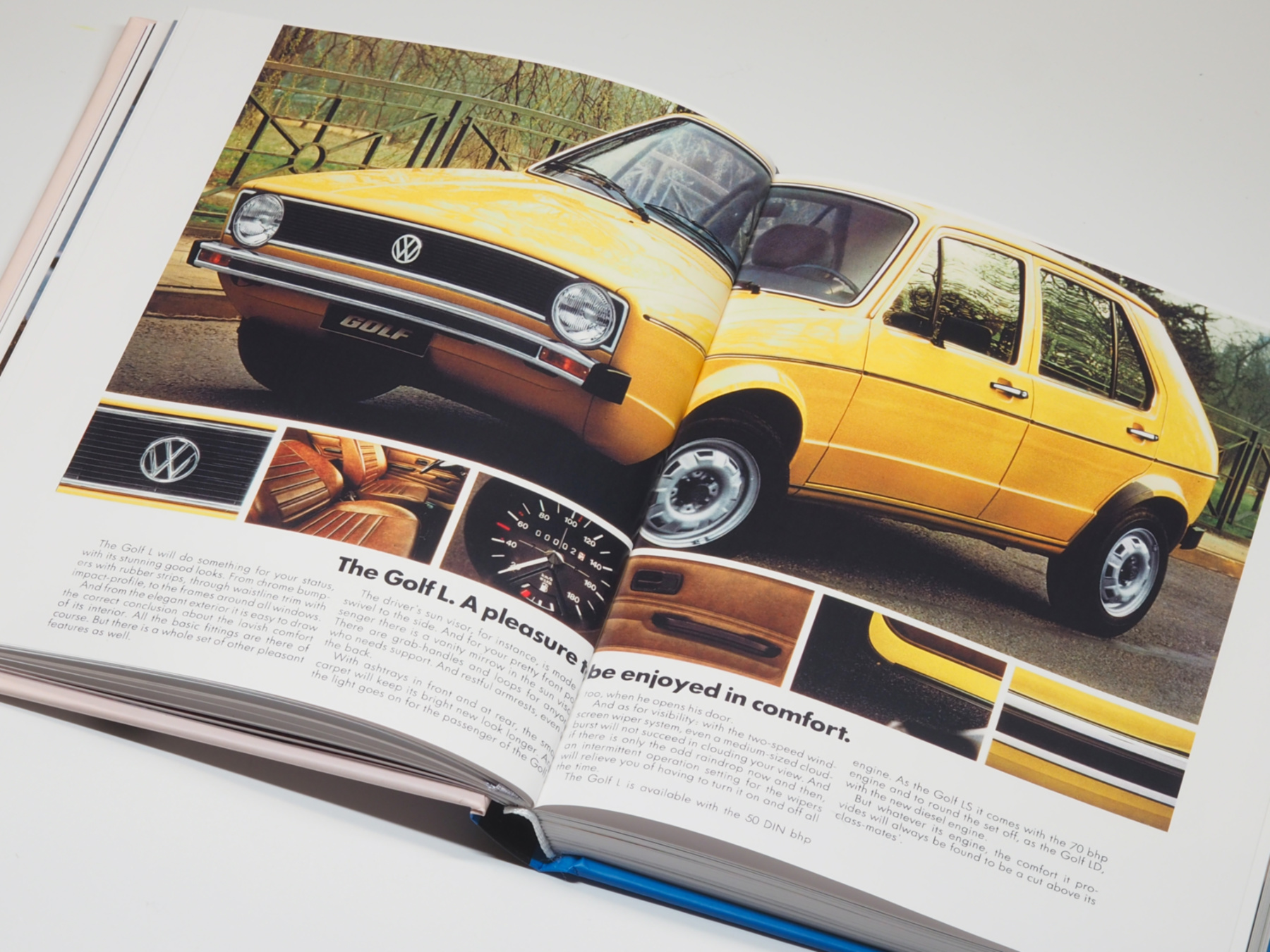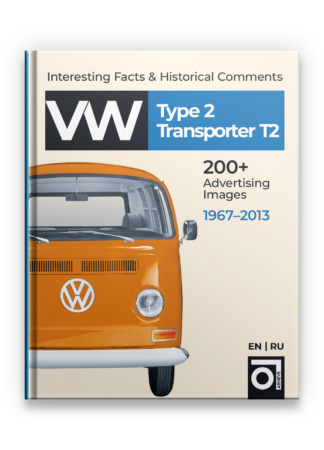Description
VW Golf Mk1 VW Hardcover book (fragment of text)
The name Golf has been inscribed in the history of the global automotive industry as the best-selling passenger car of the Volkswagen brand: 34 million and seven generations of Golf cars were produced over 45 years.
In the early 1970s, it became clear that it was time to replace the VW Beetle with a fundamentally new model that met modern realities.
The “golden” formula of the future Golf was first introduced by Volkswagen Chairman Rudolf Leiding: “The car should have a compact hatchback body, front-wheel drive, and a water-cooled engine.”
All this was embodied in the new car, which later gave the name to the European C-class. The first Golf rolled off the assembly line of the Wolfsburg factory on March 29, 1974. From that moment, a new era in the history of the company began.
The creation of Golf coincided with the global energy crisis. Therefore, the appearance of a compact inexpensive model with an economical engine allowed Volkswagen to quickly attract the attention of potential buyers to the new car.
To reduce costs, the project actively used the already existing experience of specialists from Audi’s sister company NSU Auto Union AG – Hans-Gerd Wenderoth, Werner Holstein, and Franz Hauck. In particular, the 1.1-liter 50-hp engine was “shared” by Audi 50, and the 1.5-liter 70-hp by the Audi 80.
Later, borrowing bold ideas and original technical solutions from Audi colleagues became the norm for the “parent” company VW. The famous Italian designer Giorgetto Giugiaro, who previously participated in creating various Audi and VW models, took part in developing the first generation Golf.
The new car was supposed to be a worthy replacement for the iconic VW Beetle, but in the spring of 1974, no one was sure that this task would be successfully accomplished.
Nevertheless, the front-wheel drive layout, spacious interior, and original modern design so captured the hearts of motorists that the company celebrated the production of the 1 millionth Golf in October 1976.
Advertising at the time described the car as follows: “Golf offers maximum luggage space and safety. It is uncompromisingly designed for practical use.
The low midline and sloping hood provide good visibility, and the location of the rear window makes it easier to reverse.” It is noteworthy that these words are also true for the new generations of the model…
In 1983, production of the first generation Golf was discontinued. Over 9 years, the company produced and sold 6.99 million of the best-selling Jetta, including the convertible and the Jetta sedan. It is safe to say that Golf determined the direction of development of the global automotive industry for many years.
In the 1970s, Volkswagen began experimenting with various types of powertrains, including electric ones. In 1976, VW engineers developed a prototype version of an electric Golf. The car was equipped with a 20 kW (27 hp) engine and a 4-speed manual transmission. Power for the engine was provided by a set of 16 individual 6-volt lead-acid batteries located under the seats and in the trunk.
The onboard charger allowed the batteries to be charged from a regular 220 volt outlet, which took about 12 hours. The connector was in the place of a standard gas tank. The car was used to test the technology of using electric traction as an alternative energy source.
Read the continuation of VW Golf Mk1 story in the book.
Other books about history of Volkswagen:

























Reviews
There are no reviews yet.